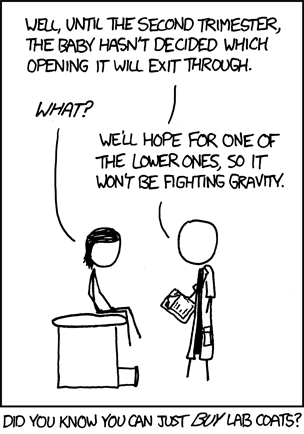With a sheaf of drawings in one hand and a felt marker in the other, I wandered through the plant. It was stinking hot, but I'd rather be out here than in the air-conditioned trailer; I had to be outside anyway, and every stop in the trailer is one more shock to the system that I didn't need. Acclimatization makes the temperature easier to bear, but not all of my co-workers believed that and they kept the office trailer cold. I know colds are caused by viruses, but the co-worker who spent the most time in the trailer and turned the air conditioner the coolest was also the only one of the crew who caught a cold.
The pipefitters had almost finished with the large pipes, and would be starting on the small pipes soon after, which is why I was out with the marker. Nobody told me in school that felt markers would be an important part of the engineer's toolkit.
Since any given tank might have a half dozen ports all the same size, and some of them are very specifically placed where they are for a reason, they can't just be hooked up willy-nilly. This was why I was standing on top of a tank in the hot summer sun this time. No gas masks needed this time, fortunately, as this was still a construction site and nothing toxic had been introduced anywhere yet.
I'd study the tank drawing for the tank I was standing on, re-verify that the ports were all placed and sized properly, then kneel beside a port and write the port number and connection beside it with the sharpie. After burning my knees on the sun-hot metal of the tanks, I'd tug my pant legs up so the holes weren't directly under my knees. Nobody told me in school that burnt knees were a hazard of the field, either!
I marked every single port, and killed more than one marker doing it. Not so much that it was a giant plant, as the markers just didn't last long, writing on hot metal out in the sun—maybe a tank and a half to two tanks per marker. Tedious jobs are part of engineering, and while I don't particularly enjoy them, it is good to just put your head down and plow through them and then they're done. And, in this case, once finished I wouldn't be interrupted repeatedly by the pipefitters asking me which pipe went where.
The next day, as I wandered around the plant to see the piping progress, my markings had faded dramatically. It wasn't many days until they were nearly gone. Well, I tried.
